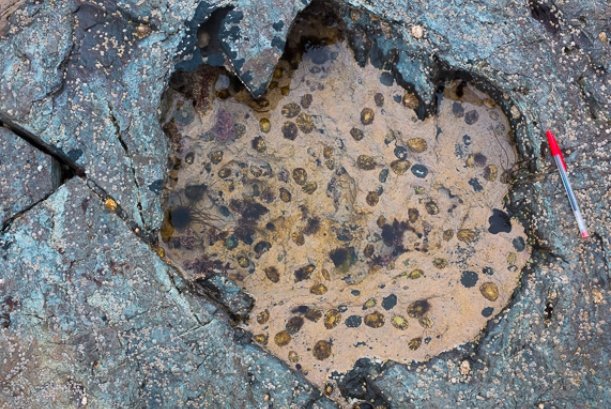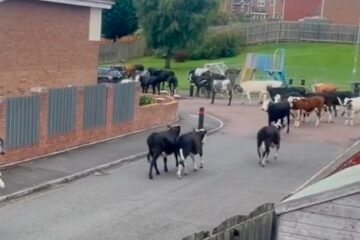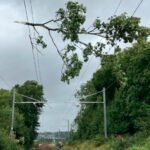Fossilized footprints on the Isle of Skye are offering new insights into the behavior of predatory dinosaurs that roamed Scotland 167 million years ago. Originally mistaken for fish burrows, the tracks paint a vivid picture of an ancient lagoon where dinosaurs gathered in large numbers.
A Discovery Decades in the Making
In the early 1980s, paleontologists spotted peculiar impressions along the craggy coastline of Scotland’s Isle of Skye. At the time, the marks were thought to be the petrified burrows of ancient fish. That assumption remained largely unchallenged for decades.
It wasn’t until 2019 that Tone Blakesley, then a graduate student at the University of Edinburgh, revisited the site—known as Prince Charles’s Point—and noticed something striking. Some of the impressions clearly showed three-toed footprints, characteristic of theropod dinosaurs. This realization led to a deeper investigation.

More Than 130 Dinosaur Tracks Identified
Over multiple field seasons, Blakesley and his colleagues meticulously examined the area, uncovering over 130 individual tracks. To capture the site in detail, they used drone technology to create a 3D map of the ancient trackways.
Unlike most fossilized track sites, where prints from long-necked sauropods dominate, Prince Charles’s Point features an unusually high number of theropod tracks. This suggests a unique behavioral pattern among these carnivorous dinosaurs.
Megalosaurs Gathered at the Lagoon
The team attributes many of the tracks to megalosaurs, large predatory dinosaurs that ruled Scotland’s Middle Jurassic ecosystem. But these tracks don’t indicate a hunting ground. Instead, the footprints suggest a different reason for their presence.
- The tracks show a walking gait rather than evidence of pursuit or struggle.
- The prints meander in multiple directions, indicating a gathering rather than a chase.
- The location, a former lagoon, would have been an essential freshwater source.
These details suggest that megalosaurs congregated at the lagoon for water, possibly coexisting with other species in a temporary truce dictated by necessity.
A Connection Between Dinosaurs and Scottish History
While the dinosaur tracks provide a window into prehistoric life, the site also played a role in a much later chapter of Scottish history. In 1746, Prince Charles Edward Stuart—better known as Bonnie Prince Charlie—hid from British troops at this very location after his failed attempt to reclaim the throne.
The prince made his daring escape across the rocky shore that now bears his name, unknowingly following in the footsteps of dinosaurs that had roamed the land millions of years before.


















